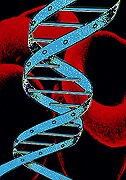
MONDAY, Jan. 25 (HealthDay News) — The sequencing of nearly 100 full genomes from three successive epidemics of flesh-eating bacteria have given scientists the first clear picture of the biological events that contribute to deadly epidemics of severe infection.
The approach can be used to track and help prevent major epidemics in the future, the American and Canadian researchers said.
“The extensive full-genome data provide us with new clues about the bacteria’s ability to take advantage of vulnerabilities in the person who has contracted the bacteria,” Dr. James M. Musser, co-director of the Methodist Hospital Research Institute in Houston and the study’s senior author, said in a hospital news release.
“With this type of unique molecular portrait of the bacterial pathogen, we can more effectively develop drugs to prevent the spread of epidemics and construct novel diagnostic and treatment strategies,” Musser explained.
A study co-author, Dr. Donald Low, chief microbiologist at Mount Sinai Hospital in Toronto, said in the news release that “until now it has been a mystery why sometimes we see two opposing types of infection in patients who appear to have the same strain of flesh-eating bacteria.”
“In some cases, patients suffer from a devastating infection of tissue and muscle requiring extensive surgery, and other patients present with a skin infection readily treated with antibiotics,” Low said. “Now, we understand in part why this happens.”
The study were published online Jan. 25 in the Proceedings of the National Academy of Sciences.
More information
The U.S. National Library of Medicine more about flesh-eating bacteria.

